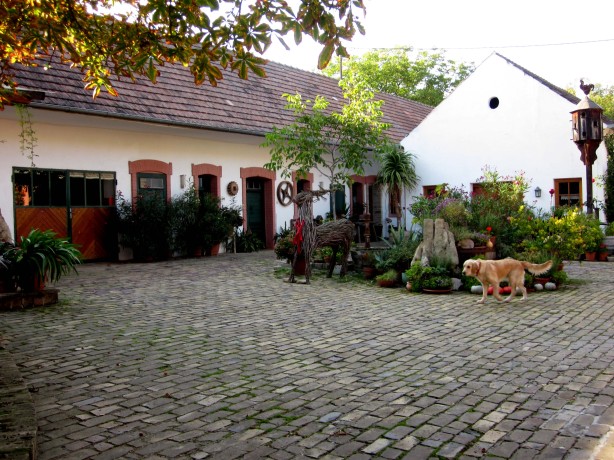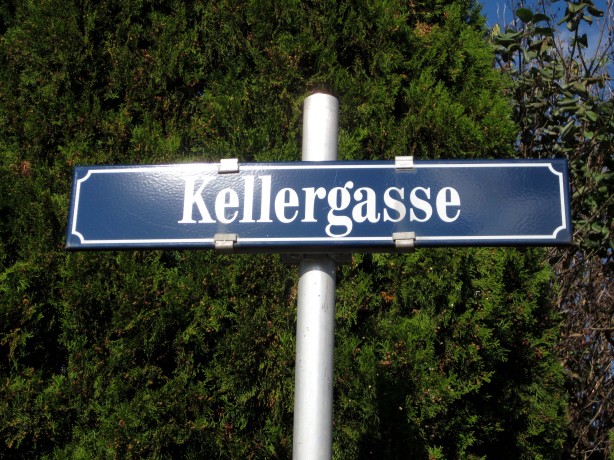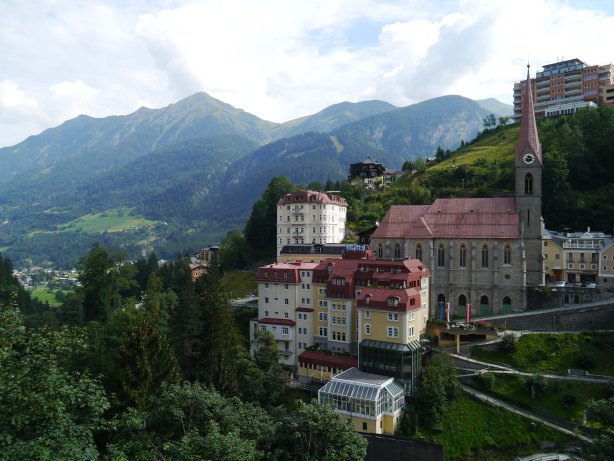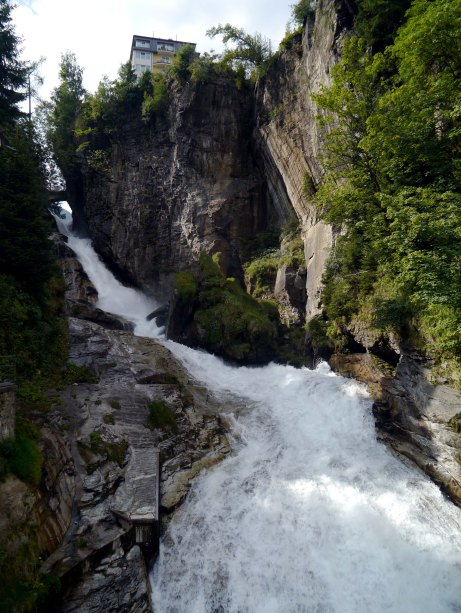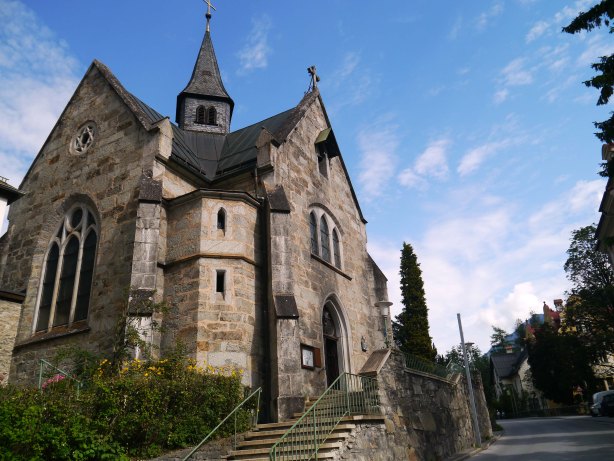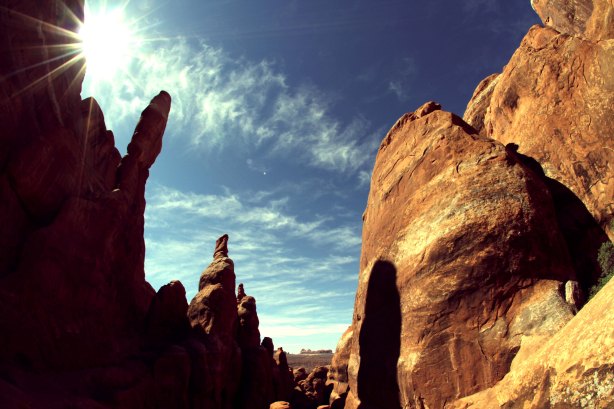I had never heard of Interlaken before going there, so it was all thanks to Ari that I even made it there in the first place! It’s almost a given that if you go to Switzerland there are going to be mountains, and big ones none the less, so I wasn’t surprised when Ari informed us that just an hour from Interlaken was one of the highest train stations in Europe.
The station is called Jungfraujoch and it stands 3,454 meters high or 11,333 feet.
The night before we had asked one of the employees at the hostel, which day was going to be nicer. She told us immediately to go on Monday, because the following day was going to have horrible weather.
Monday morning, after a fitful night of sleep (mostly everyone in the room was snoring that night), we woke up to a bright day. There were a few clouds in the sky that covered the mountains, but even before we had finished breakfast they had begun to clear away.
There are multiple ways to reach Jungfraujoch. All throughout the little valleys there are a number of small villages, all of which are connected by train. Admittedly, getting to Jungfraujoch was pretty expensive (over 100 swiss francs), but we got to ride on the train the entire way up and none of the destinations points at the top cost any money. However, not everyone who visits Jungfraujoch has to take the trains all the way up. If we had had more time in Interlaken, hiking part of the way up would have been wonderful. There are plenty of hiking trails around the area that make it pretty simple, but as it was, we traveled by train all the way up, from Interlaken, to Lauterbrunnen, switched trains to Kleine Scheidigg, and finally boarded one last train to Jungfraujoch.
The entire journey from bottom to top is amazing and breathtaking. At first we were low in the mountains and our view consisted of rolling hills overshadowed by giant craggy cliffs, but as we climbed up the side of the mountain the world began to unfold around us. Suddenly we could see hundreds of peaks stretching out and many small villages tucked safely inside the valleys.
Looking back down the hill from where we came, all we could see was bright green grass and trees, but looking ahead, the landscape drastically changed and suddenly all I could see was snow, crumbling rocks and barren land.
About half way up we were able to spot the end station, it’s so high and yet it still doesn’t reach the summit! On the right of the Jungfraujoch station is Jungfrau at 4,158 meters or 13,642 feet. To the left of the station is Mönch, which is a little shorter at 4,107 meters or 13,475 feet.
Once we reached Kleine Scheidegg the train basically dissapears into the mountain and the rest of the way up we had no view. There are, however, two spots where the train stops and we were allowed to leave the train to see the view. One of the stops was called Eigerwand (Eiger Wall) and the other Eismeer (Sea of Ice).
View from Eigerwand.
As we climbed it was easy to feel the difference in temperature, luckily the train was heated, although the one before hadn’t been. After about an hour and a half of riding we finally arrived at Jungfraujoch. The tunnel we arrived in was long and dark and as I stepped out of the train, it hadn’t quite hit me just how high up in the mountains I was.
At Jungfraujoch there are a number of things people can do, but in general people stick to the “guided” tour. I say guided, but really there were only signs telling us where to go. After exiting the train we had to walk down a long tunnel until we came to the Jungfrau Panorama. Basically this is a giant room with wonky projector screens that show you what you’re going to see outside. It was kinda cool, but at the same time I would have liked to keep the view a surprise. However, the projections of the view, as you can probably imagine, are nothing like the actual view itself.
To get to the very top of Jungfraujoch we had to take an elevator to the Sphinx. The Sphinx is the platform outside on the mountain. It has a inside viewing area with two levels and then an outside viewing area with a large deck. It was one of the most amazing and absolutely freezing views I have ever experienced. I had dressed appropriately for going to Switzerland, but I hadn’t realized that we would actually be going so high into the mountains and I forgot a hat or a scarf. Despite my lack of hat and scarf, when I stepped outside I completely forgot about how cold I was.
The Aletsch Glacier
Standing there I felt so insignificant, just looking at the Aletsch Glacier and imagining the sheer power it must take to carve through mountains. I took so many pictures of the same view that my fingers were beginning to hurt from the cold and I could already feel my ears turning red and my cheeks stinging, but we must have stayed out there for at least twenty minutes. We had been completely lucky and there were barely any clouds in the sky, so we could see for miles and miles on end. It was the perfect day.
From the Sphinx we were apparently suppose to be able to see France, Germany and Italy, although I was all turned around and really couldn’t tell which way each country was.
A helicopter far off in the distance. There were also a few jets flying overhead. They would circle the mountain and then come around and fly over Jungfraujoch, probably showing off for the tourists.
On the opposite side from the glacier. One of my favorite things was the low-lying clouds hiding in the valleys.
After we had officially all frozen into icicles we decided to head back inside and check out the rest of the area.
Exiting the Sphinx, the tour signs led us down a long hallway that came out in a room with a giant snowglobe. This part of Jungfraujoch is called Alpine Sensation. Basically, it was a long tunnel full of lights and music, and some history.
The giant snowglobe that would change from day to night and then through the seasons too.
The second thing I was most looking forward to at Jungfraujoch, after the view, was the Ice Palace. To enter the palace we had to walk down a flight of stairs and then step into a very long tunnel completely made of ice. It was really exciting and fun to slide around on the ice with our shoes and walk through little tunnels made completely of ice.
The entrance to the palace.
A small ice tunnel that I could basically touch the roof of with my head if I stood up straight.
An example of the ice sculptures that were placed throughout the palace.
After goofing around in the ice palace we headed to the last stop on the tour, the Plateau. The Plateau is off to the side of the Berghaus, or the main building, and it allows people to walk out onto the mountain. There were ropes on either side of the Plateau, but it was actually a little precarious walking out there, because it was so slippery. Right outside the door the snow sloped up to the Plateau, so we had to shuffle our way inch by inch until we could reach flat ground. It was hilarious seeing so many people shuffling along up the hill. Luckily no one slipped.
The small hill everyone had to climb to reach the Plateau. It wasn’t actually that steep, but ice makes everything tricky.
After we took some photos Ari and I decided to have a race down the hill, so we both sat down and using our hands pushed ourselves down the hill on our butt. It was a safer and much more fun way of getting down.
Completely frozen and exhausted from the altitude, we decided to get lunch at one of the restaurants in the Berghaus. We were lucky, because after we were done eating the Plateau was closed, maybe because it was too icy.
We ended the day by traveling back down the mountain. This time we went through Grindewald instead of Lauterbrunnen, because Ari and I wanted to explore some of the smaller villages. We stopped for a half hour in Grindelwald, giving us just enough time to walk down the main street and enjoy the disappearing sun.
Walking the small streets of Grindelwald.
We arrived back at the hostel late that night and thanks to a special deal we had with the hostel we were served a three course meal at one of the local restaurants called Des Alpes. It was so delicious that we decided to return the following night. For one of my dinners I ate Rösti, which is a traditional Swiss dish made out of potatoes, onions, cheese and bacon. Yum!
All in all our trip to Jungfraujoch was a day that fell perfectly into place. We got lucky with the weather, we were able to walk out onto the Plateau before it closed, and we were served a cheap and delicious dinner.
















